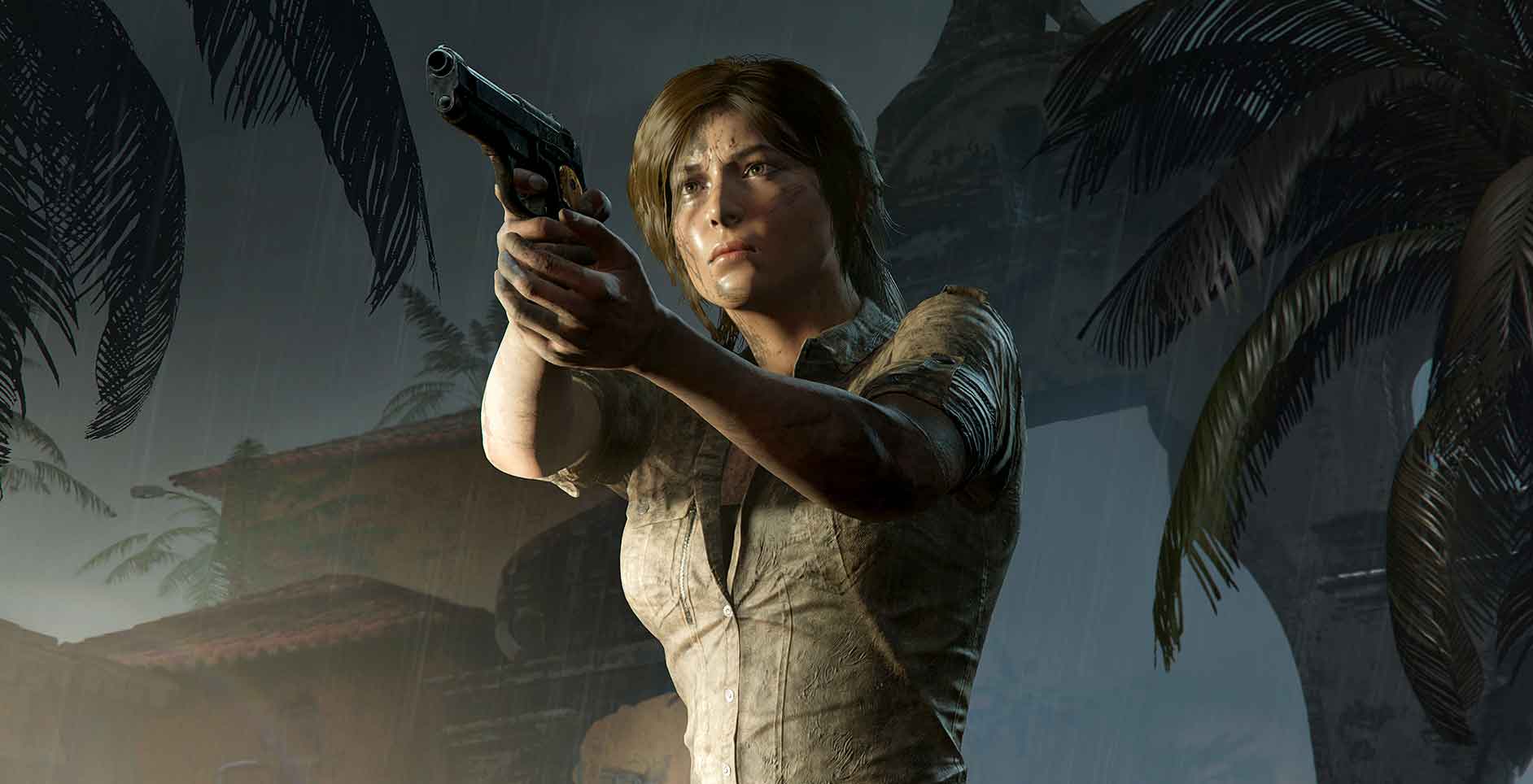Yikes.
That was the word that popped into my head on multiple occasions while at a recent hands-on event for Shadow of the Tomb Raider, the upcoming conclusion to the massively successful rebooted trilogy in the long-running franchise.
The previous two games are well-known for allowing protagonist Lara Croft to die in all kinds of shockingly violent ways, and Shadow of the Tomb Raider is no different, but damn does she make some bloody brutal plays of her own this time around. Lara has spent the last two adventures being beaten, bruised and broken, and while 2013’s Tomb Raider forced the budding archaeology student to become a hardened survivor, by the time the credits roll on 2016’s Rise of the Tomb Raider, she’s practically a cold-blooded killer.
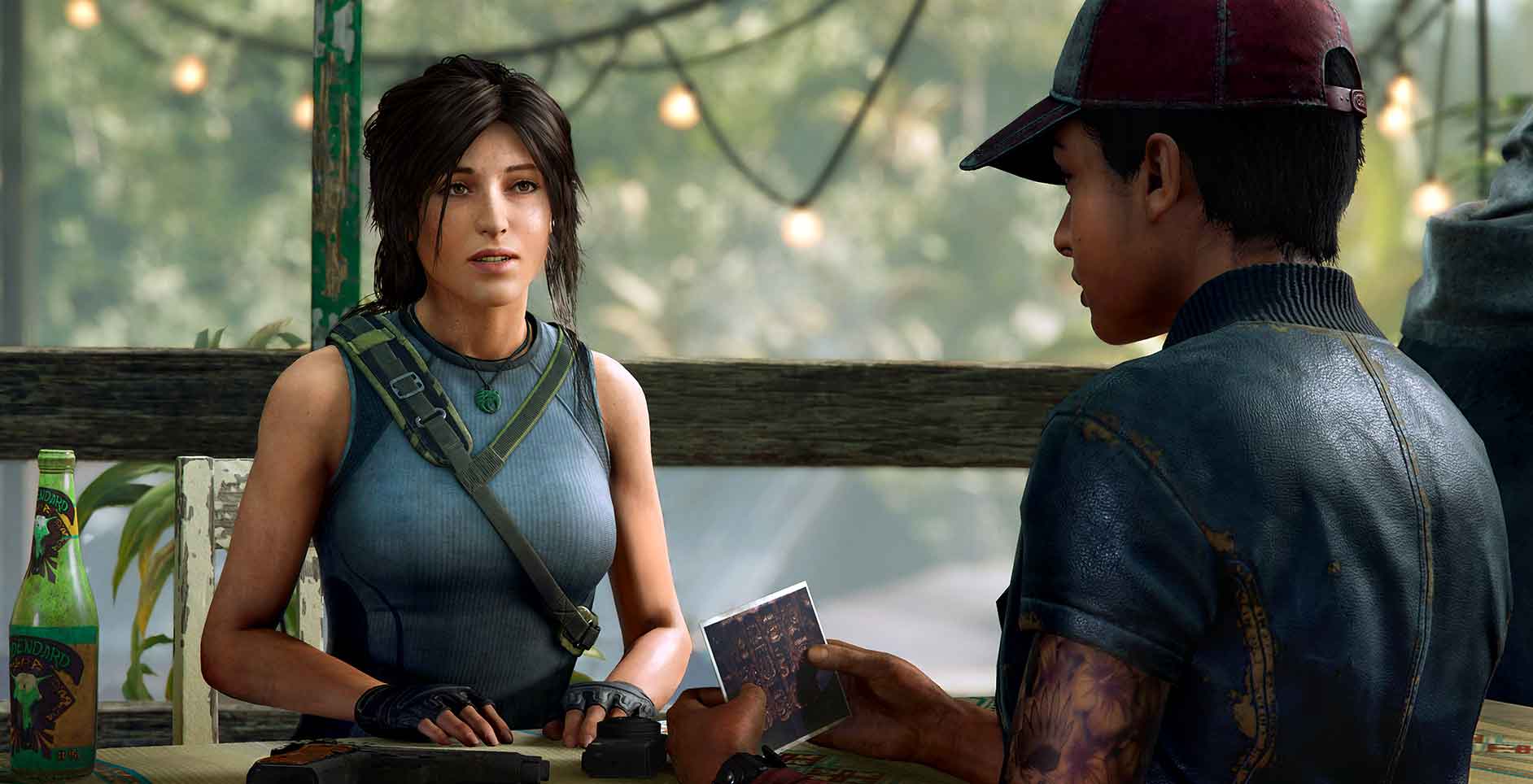
SotTR’s Lara then, is the culmination of that. Ruthless, efficient, willing to do whatever it takes to uncover the world’s mysteries and put a stop to Trinity, the organisation that murdered her father. During my hands-on demo, in which I played through the first five hours of the game, I witnessed Lara shoot, stab, hang and even drown her enemies with a the kind of unflinching precision that suggests she’s not just been pushed to the edge but right the bloody hell over it.
Shadow of the Tomb Raider begins, after a quick forward-flash involving a small plane and a massive storm that goes suitably tits-up, in a quaint Mexican town during Día de Muertos celebrations. Lara and her long-standing companion, Jonah, are tailing a man named Dominguez, thought to be the current leader of Trinity, who is there in search of a fabled Mayan artifact. I won’t spoil too much of the story past this point, but the pivotal moment here is that Lara finds the artifact and takes it in order to prevent Trinity finding it. This, Dominguez later tells her, was a mistake. He believes she’s triggered none other than the Mayan Apocalypse, which Lara of course is skeptical about… until a monstrous flood rips through the town, killing nearly everybody and setting Lara and Jonah off on a journey to solve a Mayan mystery and prevent the end of days. The pair take flight for Peru, where they deduce the next clue is hiding, and promptly crash-land in the middle of the jungle.
The first thing I noticed whilst playing is that it looks fantastic. The modern Tomb Raider games have always looked great, but moving through the dense, crowded streets as people danced, sang and set off fireworks during Dia de Muertos is an audiovisual experience that edges seriously close to something out of Uncharted 4, which is a lofty benchmark to aspire to for a game like this. It’s a great opener, but much like similar scenes in Uncharted it’s heavily scripted, leading me to wonder if the rest of the game would be as impressive.
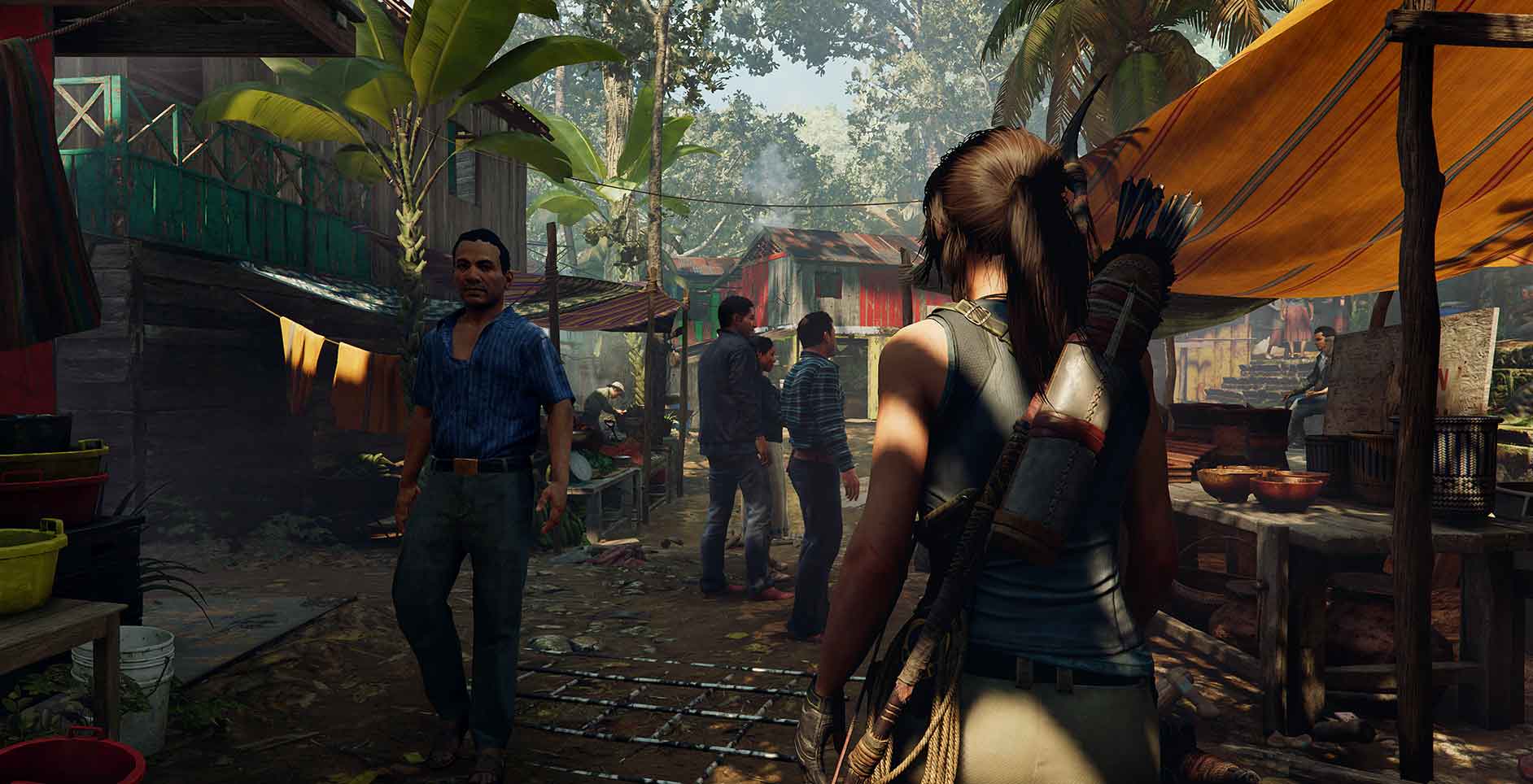
Thankfully, as soon as things progress to the game’s primary setting of Peru and the lush, tropical jungle along the Amazon river I found myself just as much in awe. I hesitate to keep using the word ‘dense’ to describe the environments in this game but they really are, more than ever. The Peruvian jungle is thick, misty and teeming with plant and animal life, and between the gorgeous lighting and masteful effects work the atmosphere is astonishing.
Playing the demo build on a PS4 Pro, I was able to select between high resolution or high framerate mode, and although the high resolution mode looks as sharp and cinematic as you’d want it to, I opted for the higher framerate because I feel it adds just that extra bit of presence and tangibility to everything, which is a more than welcome benefit. Just as impressive as the environments in Shadow of the Tomb Raider are the characters. Eidos have seemingly tweaked the models for the returning characters, including Lara, but anyone worried about the changes needn’t be concerned at all. Great lighting and animation work are the key players here, with skin glowing convincingly in the sun, hair and cloth physics working their usual magic and some of the best facial animation I’ve seen in a while really selling the emotion in every line of dialogue.
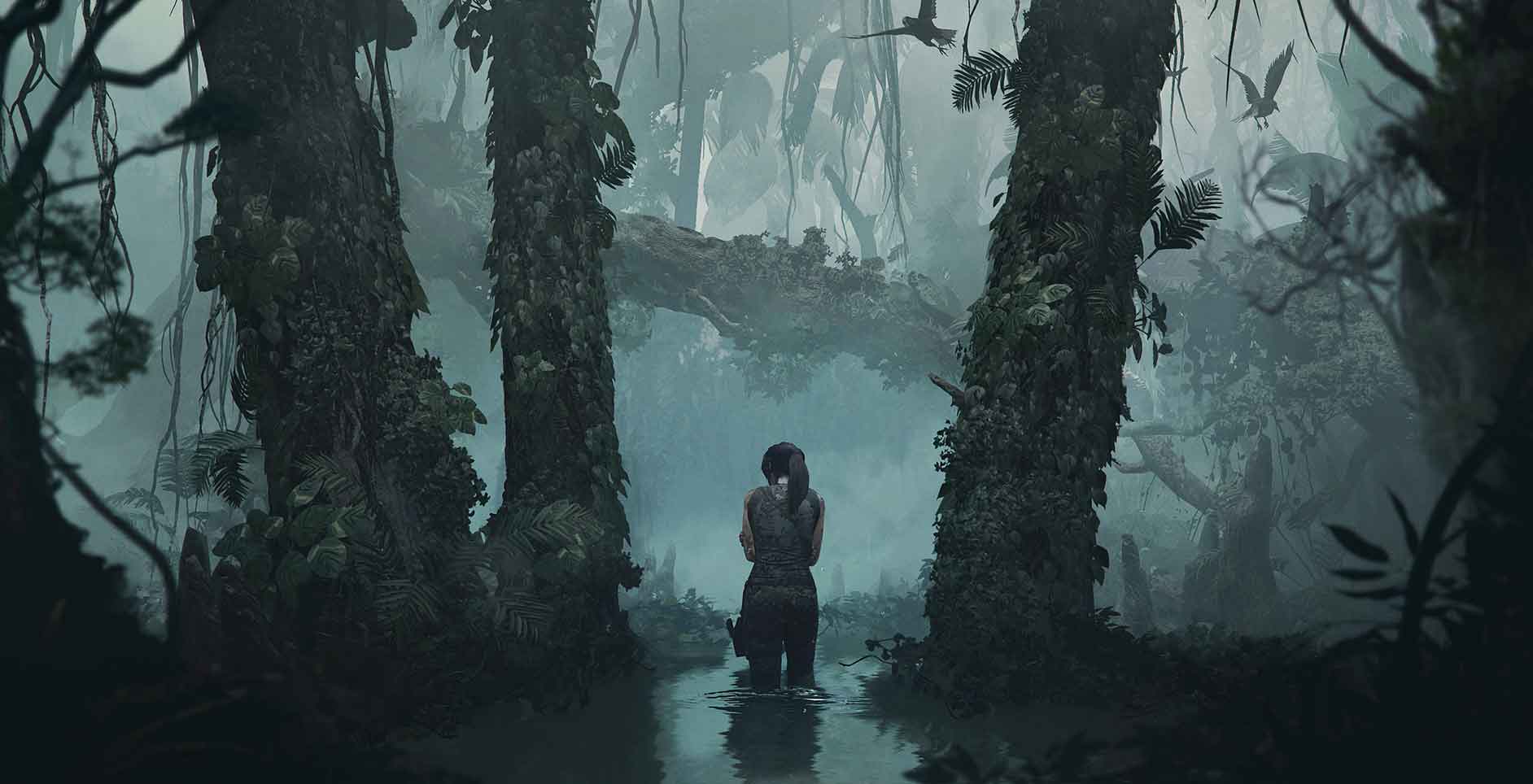
In gameplay too, the immediacy of Lara’s movement controls and animations really drive home just how much more capable and bold she is. Old Lara was seemingly always on the back foot, always using the environment but never truly mastering it. New Lara is the master of her environment, and Eidos have made certain that her newfound self-assuredness is made fully apparent in the game mechanics. From small additions like being able to attach to out-of-reach climbing walls by throwing her rope axe at the mid-jump, to game changers like rappelling, traversal in Shadow of the Tomb Raider is greatly expanded to match Lara’s skills and determination. Swimming and underwater exploration played a bigger role in the demo than I was expecting, too. There were quite a few extended sequences that had me frantically swimming through submerged ruins, desperately looking for pockets of trapped air to keep me going and trying to avoid creepy giant eels that wanted to kill me. Anyone with a fear of deep water or tight spaces is probably going to need some moral support here.
When it does come time to face down some human opponents, things feel largely similar to Rise of the Tomb Raider, albeit with some added extra layers of depth. Stealth is a deeper and more compelling option now, thanks to the new jungle setting, with more places to hide including overgrown vertical walls and the tops of trees. Lara can also find pools of mud to cover herself in and blend against even more surfaces, and water takedowns are more viable than ever with the new swimming mechanics. Hiding in tree tops before stringing bad guys up over branches and killing them is a particularly brutal new addition that feels very Predator-y. Of course, sometimes things go pear-shaped and turn into a shootout, and from what I could tell in the very few firefights I got involved in things haven’t changed much in this area. If anything gunplay feels a tad meatier and more responsive, but it’s hard to judge from the time I had. There were a couple of sequences in the demo where Lara got into fights with packs of jaguars with only her bow and crafting skills to defend herself, and these were tense and fun.
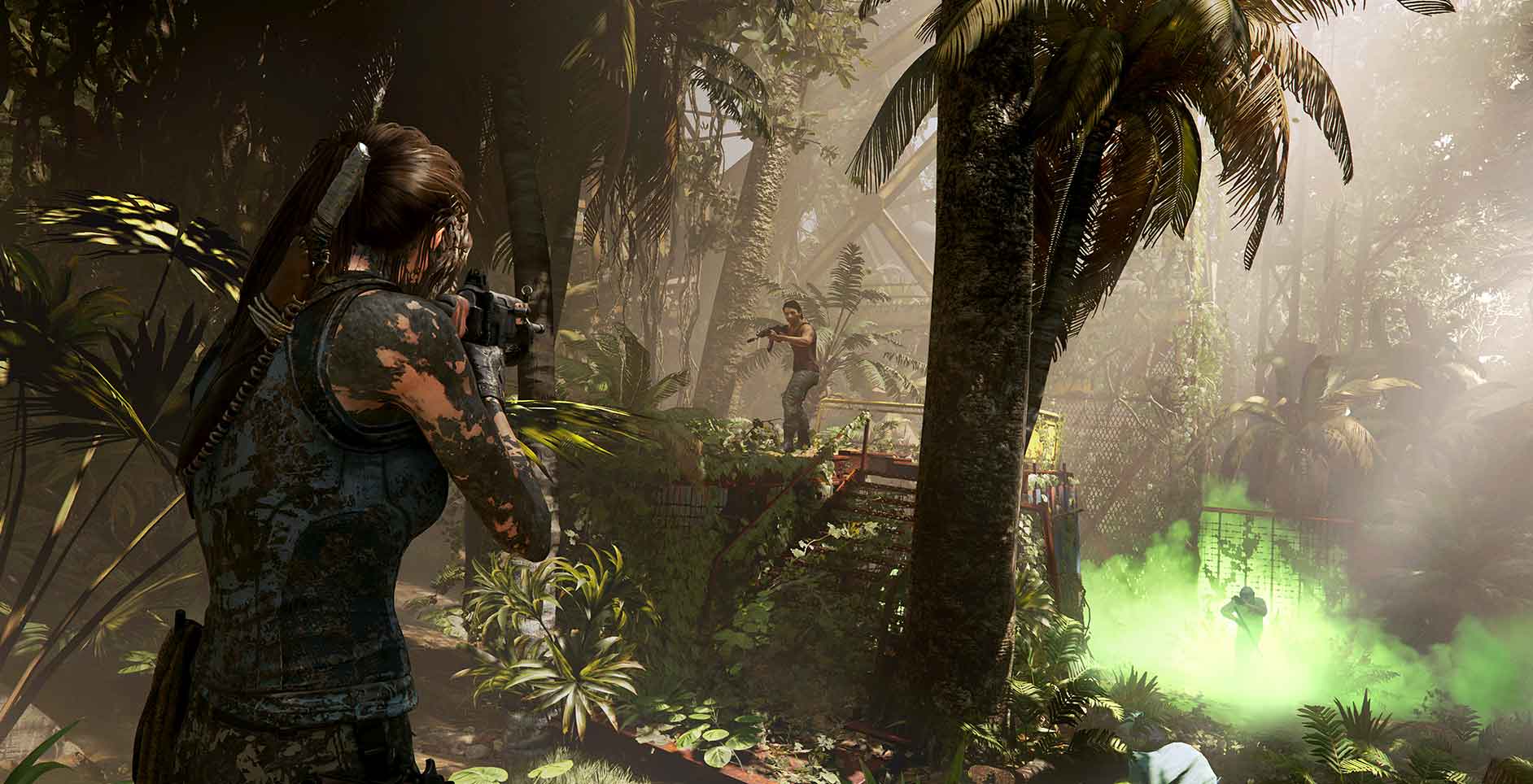
Speaking of crafting, base camps are back and work in much the same way fans will be familiar with. Sit down at a campfire and Lara can use resource found in the world to craft upgrades to her equipment and use earned skill points to unlock new abilities. The idea of three distinct skill trees returns, named Seeker, Warrior and Scavenger. Players are free to unlock abilities in any of these areas though, and Eidos have actually come up with some really unique ability upgrades that seem incredibly useful and make for fun pairings of skills from different disciplines. Outfits play a much bigger role this time, with many more outfits able to be unlocked and crafted that provide buffs. Clothing options divided into upper and lower body too, making it possible to mix and match pieces to either utilise different kinds of stat bonuses or double down on specific ones. Shadow of the Tomb Raider feels distinctly more RPG-ish than Rise did, but thanks to the fact that every mechanic is neatly tied in thematically with the story or environment it never felt too ”game-y” or got in the way of my immersion.
About halfway through the demo, the story took Lara and Jonah to a small shanty town near the Amazon where they meet a new character and have the chance to take on sidequests, talk to the townspeople and even exchange resources for new items and equipment in the town’s general store. Eidos have really expanded on the series’ design DNA where small-ish open ‘hub’ areas serve as connecting points to important story paths as well as optional areas like challenge tombs and hidden crypts. The shanty town is already one of the bigger examples of these that I’ve seen, but there are promises of an even bigger city to be explored later in the game that will serve as a central point to everything. It’s little wonder that this year’s God of War used a similar principle for designing a game that feels open despite being largely comprised of linear sequences, because it really works, and I can’t wait to explore the city of Paititi when the full game launches.
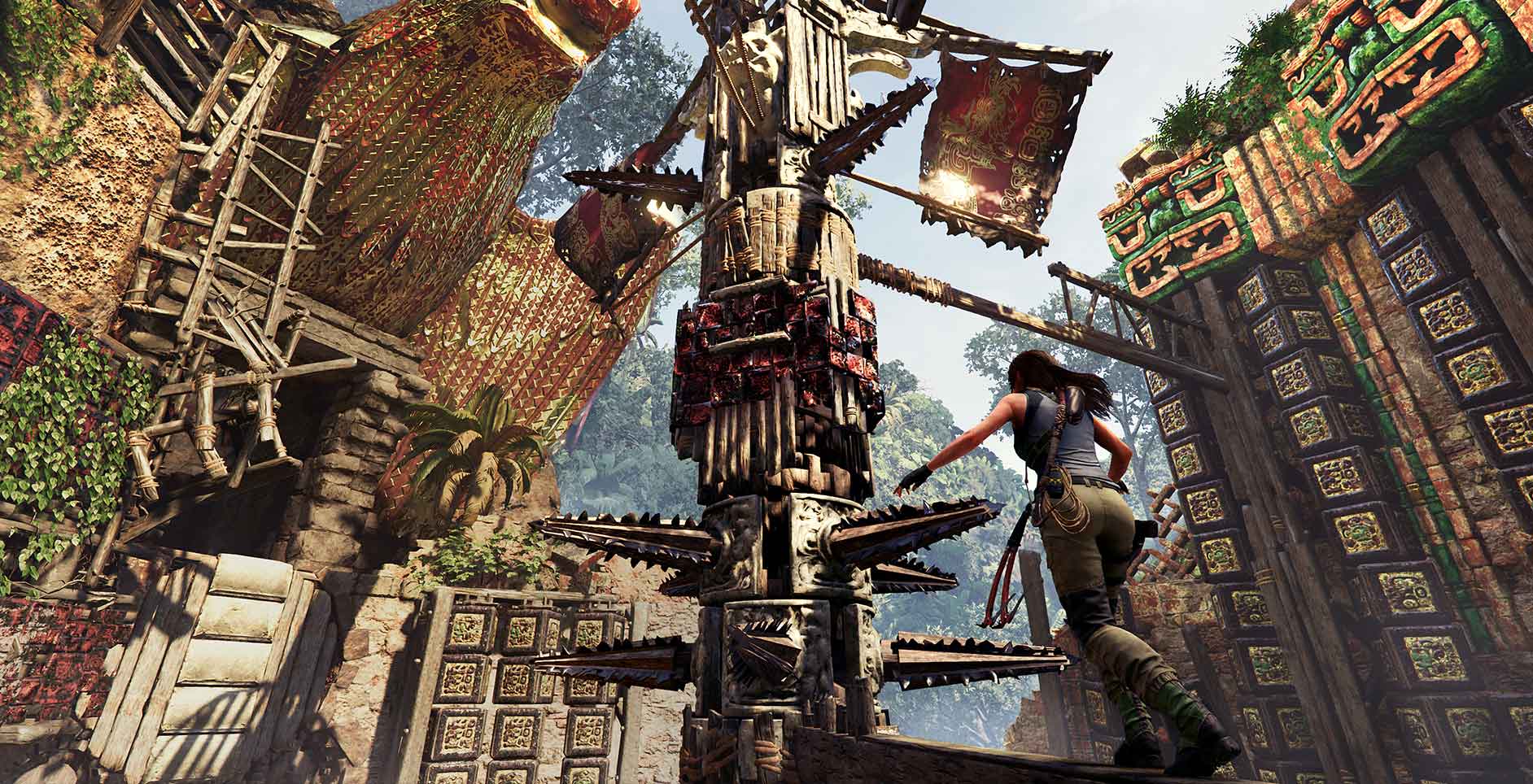
The most positive take away from my few hours with Shadow of the Tomb Raider is that Eidos are seemingly aware of the awkward disconnect between Lara as a character and Lara in-game that’s been developing over the past two games. It’s the Uncharted effect, where the protagonist avoids and discourages violence in story sequences before proceeding to straight-up murder swaths of nameless baddies during gameplay. The first and most promising way that this feels mitigated in Shadow is that for the majority of my hands-on time I was exploring jungles and caves and, y’know, raiding tombs. I only came across maybe three or four groups of enemies in my five hours, and they were small and impactful encounters. On the other side of that coin, Eidos aren’t shying away from portraying Lara as the cold-blooded killer that she’s become, but the narrative actively explores this alongside the gameplay. The disastrous flood that Lara believes she is responsible for is also a catalyst to some much-needed introspection about how far she’s willing to go to get what she wants. We’ve seen Lara face nearly every obstacle to date with a bow and a gun and come out a hero, but Shadow of the Tomb Raider’s opening moments seem to suggest that she’s more of an anti-hero, one whose biggest obstacle now is questioning the morality of her own actions.
In taking the reins from previous developer Crystal Dynamics, Eidos Interactive seem to be putting their own stamp on the series, and bringing their own gameplay and storytelling techniques to the table. The result, at least as far as I played, is a deeper and more satisfying experience that fleshes out moment-to-moment gameplay mechanics and systems while also deftly pushing the existing narrative to new heights. I’m now more excited than ever to finish off Lara’s story this September.


